Like it or not, the world is going wireless and even renowned brands like final are jumping on the bandwagon. The Japanese company has recently introduced the true wireless ZE3000 and has now introduced the final UX3000, which are, to the best of my knowledge, the first Bluetooth full-size headphones made by final.
Disclaimer: I received this unit free of charge from final’s UK distributor, KS Distribution. The UX3000 retail for £119 / €139 / $179. Additional info is available on final’s website.
TL;DR: recap
| Pros |
Cons |
| + Good comfort
+ Great passive isolation + Long battery life + Good ANC |
– Build quality could be better
– Spiky, excessively emphasised treble – Recessed, distant mids – Turning off the headphones doesn’t really turn them off |
Rating: 6/10
Packaging & Accessories
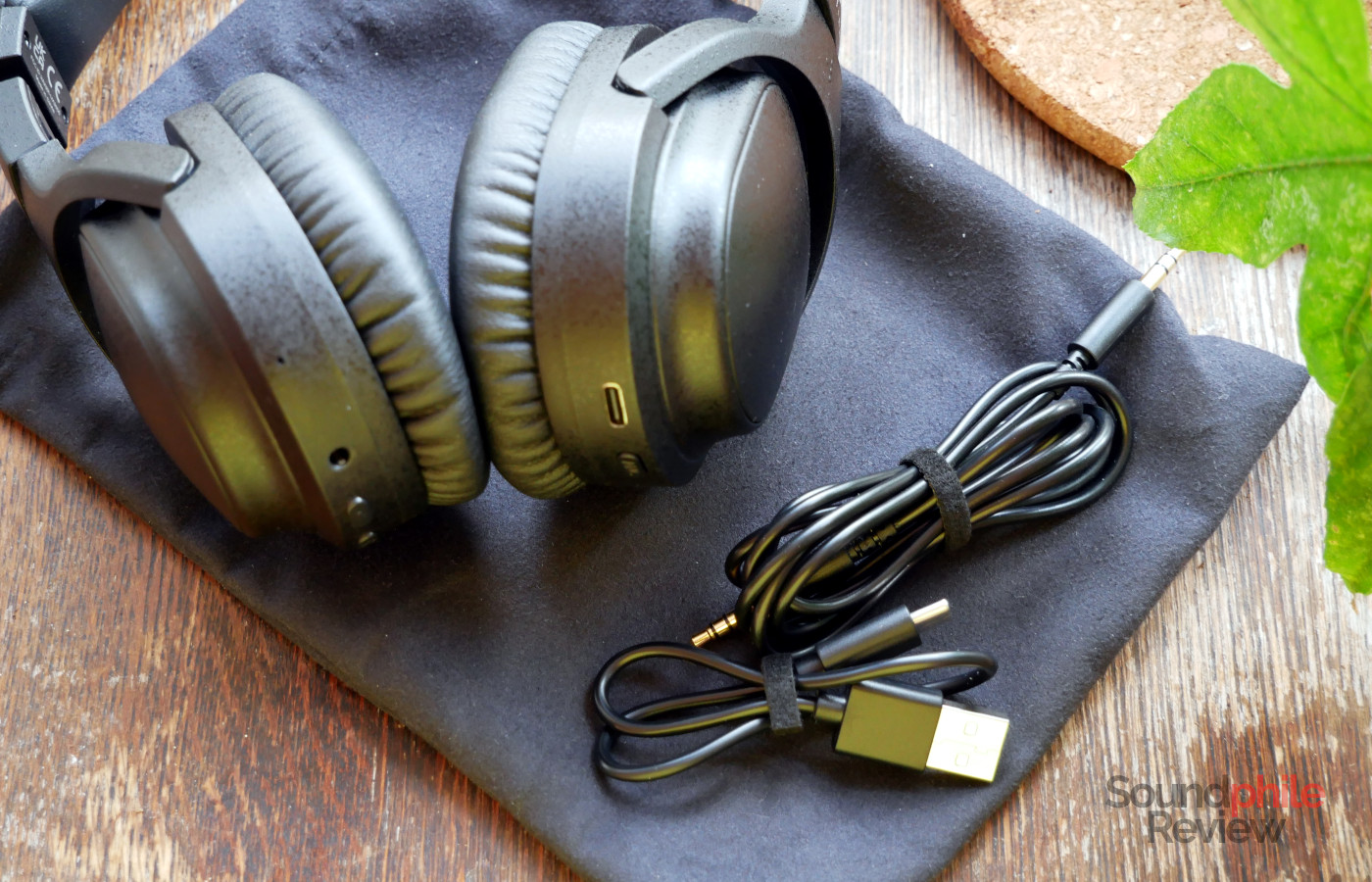
The final UX3000 come in a cardboard package that contains the headphones themselves together with a drawstring pouch, a USB to USB-C cable and an audio cable with 3.5 mm jacks at both ends. One thing I noticed about the packaging is that the headphones are kept in place with shaped plastic, but then everything else is fixed to said plastic pieces using precisely-cut paper tape.
Design & Comfort
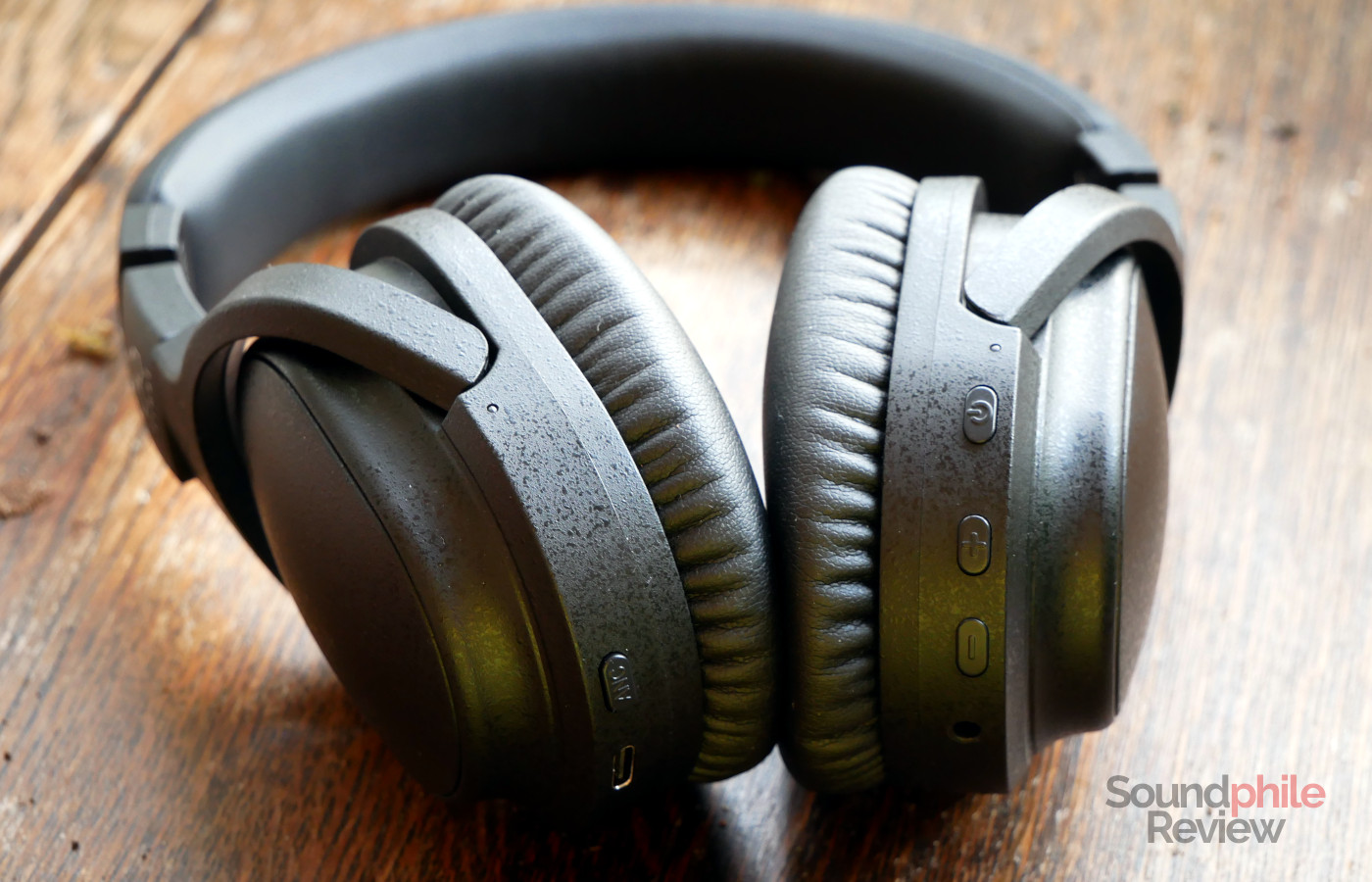
The design of the final UX3000 is quite similar to that of many recent Bluetooth headphones – it is not too different, in terms of shape, from that of the Sony MDR-1000X released a few years ago. This is not to say it doesn’t have its own personality, as final made the UX3000 stand out with a peculiar finish: they call this “shibo”, which is the Japanese word for the wrinkles that form on paper or leather. It reminds me of the finish you can often find on cameras and it gives the UX3000 a unique look, with a gently rough surface that’s pleasant to the touch.
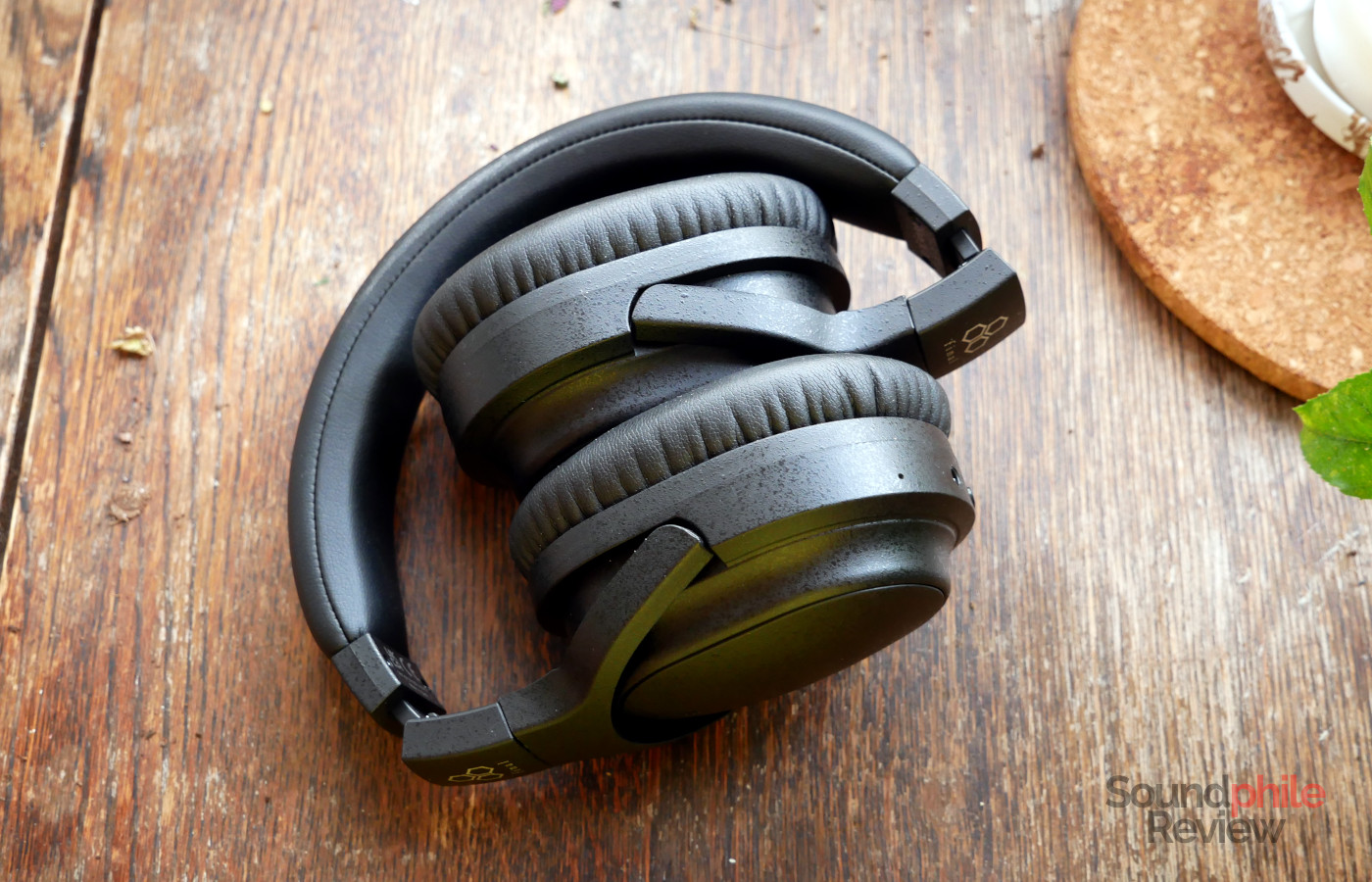
The UX3000 can fold thanks to a hinge on the headband and they can be made to lie flat on a surface by rotating the earcups, as they swivel on the vertical axis (which makes them quite flexible when it comes to adjusting them to the shape of your head!).
The right hand side cup has the power button plus two buttons to adjust volume, as well as the 3.5 mm jack input. The left hand side cup has the ANC button and the USB Type-C port to charge the battery. Oddly enough, there are two status LEDs: one is on the cup on the right hand side and it gives you information about the status of the headphones (powered on or off) as well as that of the connection (paired, pairing, etc); the other one is on the cup on the left hand side and it is only used when the headphones are charging.
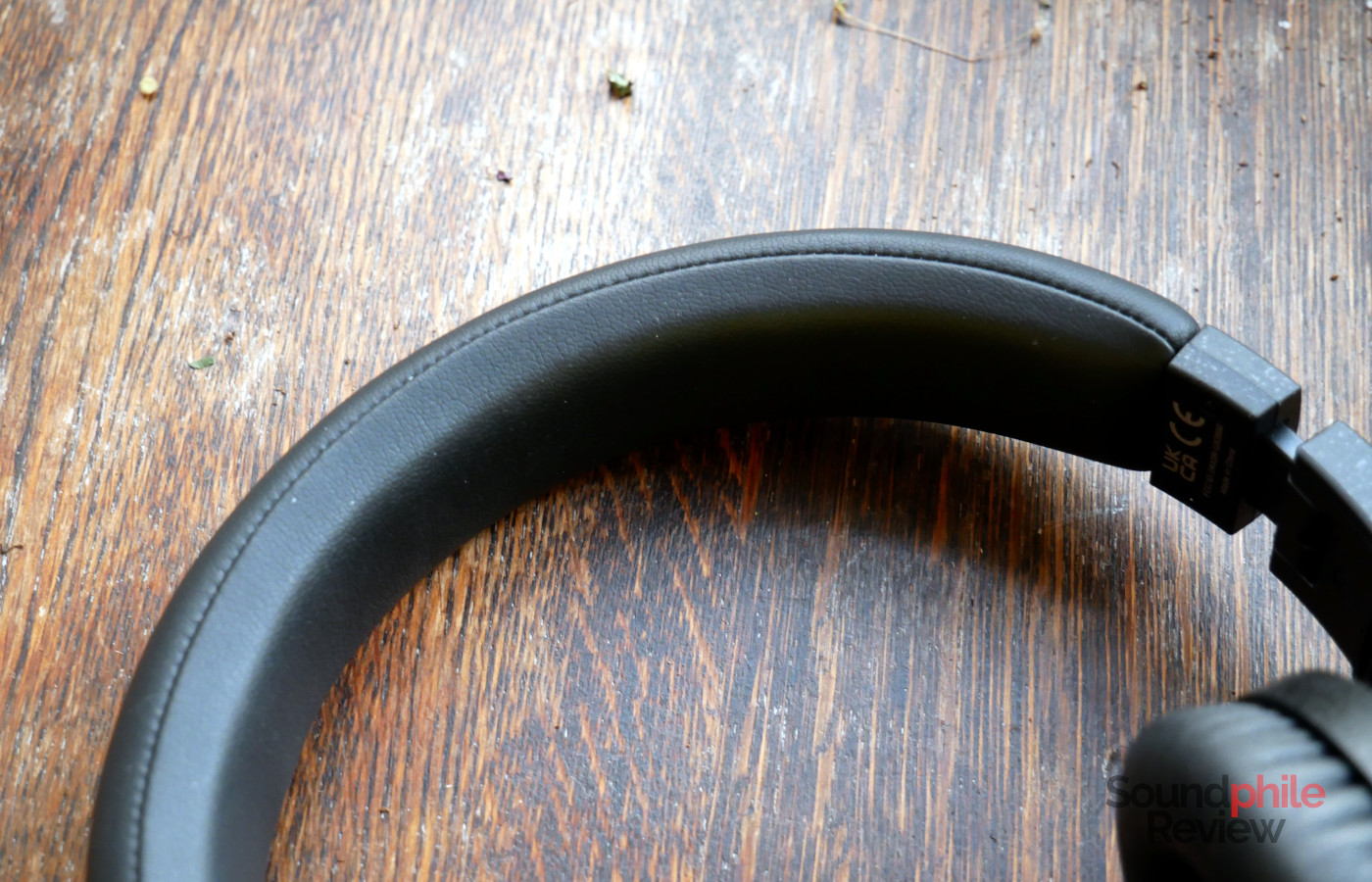
In terms of build quality, the final UX3000 are more than decent, as they appear to be generally robust and made with quality materials. One thing I don’t especially like, though, is that the earcups move horizontally in their frame: the gimbal is slightly larger than the actual size of the cups, so that they move (or, conversely, the gimbal can be squeezed). Although this doesn’t have any functional impact, it doesn’t feel great and the plastic does creak a bit if you squeeze it. I would expect these things not to be there on a $200 product.
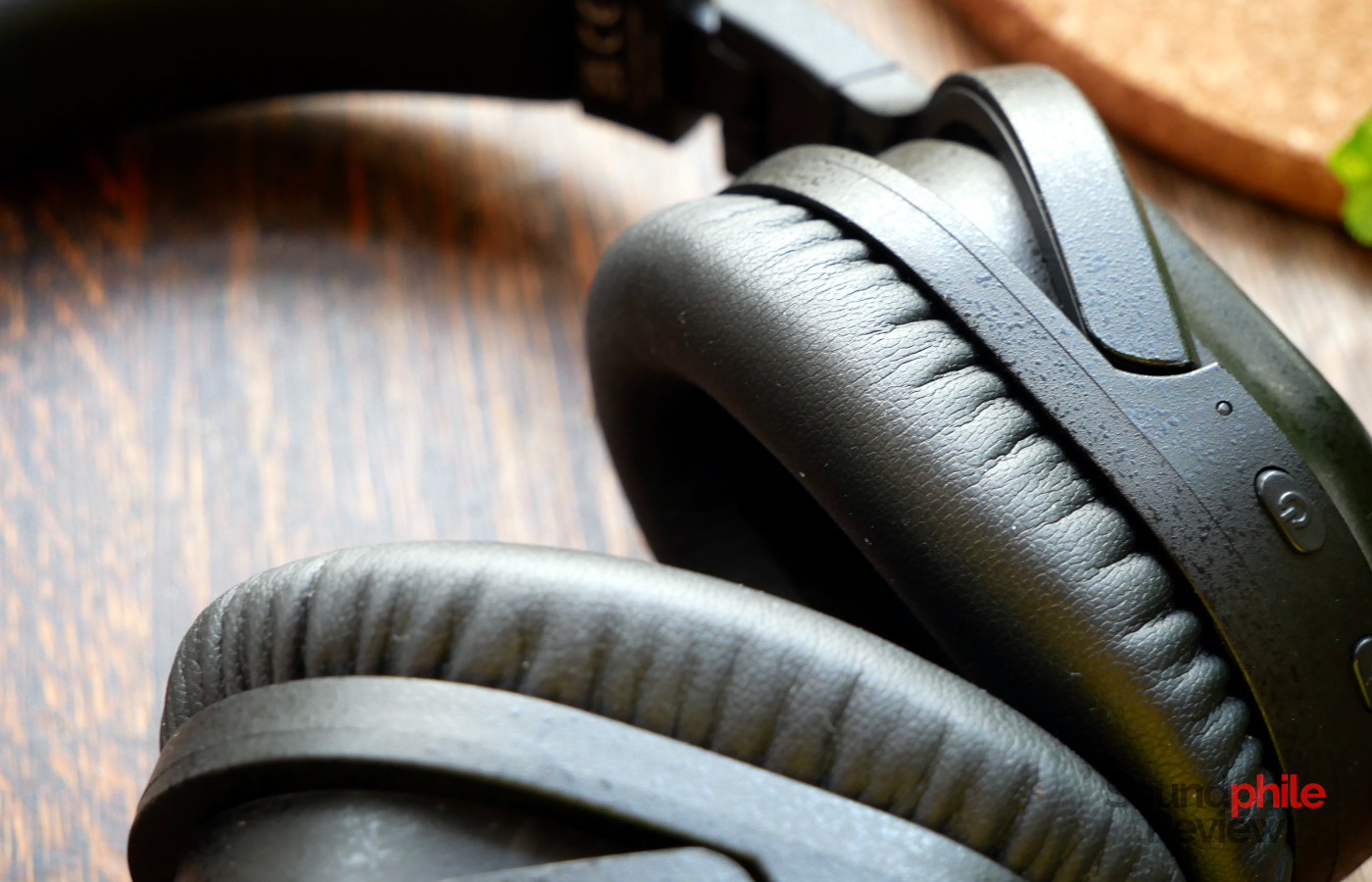
Comfort is quite good and I say that as an extremely picky person in this regard as (unfortunately) I have a skin condition that often makes wearing full-size headphones painful. The UX3000 stay comfortable for a long time, often more than one hour, which is quite something. Their weight of 260 g and the generous padding surely have a role in this. The only issue I have found is that the earpads are quite warm and even during the Scottish winter they can make my ears quite hot and sweaty.
The one thing that impressed me the most about the final UX3000 was the passive isolation: just by wearing them, all sounds around you are decreased in volume by quite a significant margin. This means that in relatively quiet environments you won’t even need ANC to exclude sounds from around you, which is quite nice as it prolongs battery life. This also means that those sounds which aren’t usually reduced by ANC are affected by passive isolation and don’t stand out – a common issue with ANC headphones.
Extra Features & Battery Life
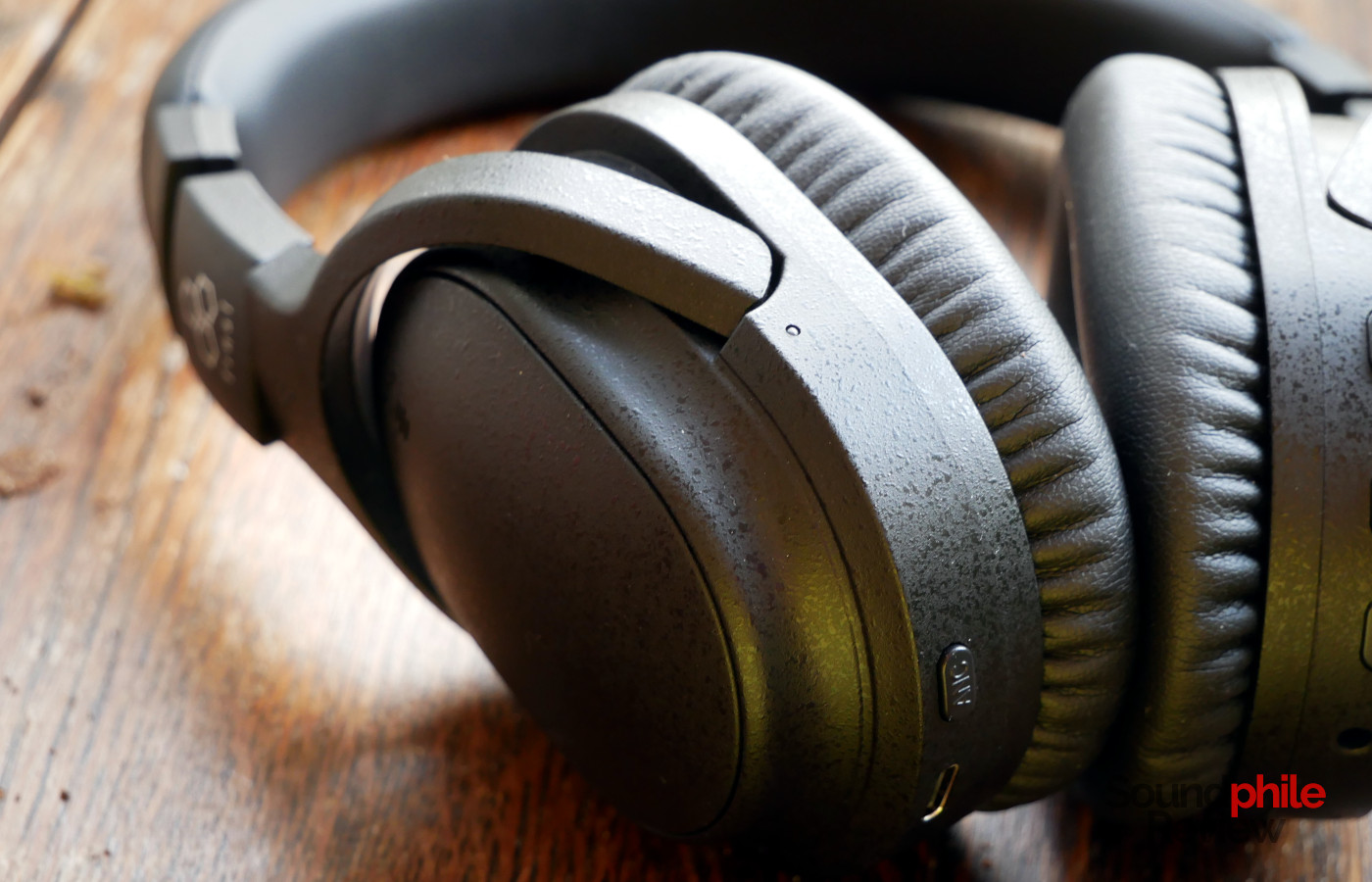
The final UX3000 feature the Bluetooth 5.0 standard along with the SBC, AAC, aptX and aptX Low Latency codecs. Unfortunately there’s no aptX HD nor LDAC. The connection range and strength are generally good, but entirely inside the average: my usual test of walking around the house reveals that the UX3000 cannot keep a stable connection in the whole flat and start stuttering when I venture more than ~5m away from my computer. One feature I especially appreciate is the presence of multi-point connection, which allows you to connect to up to two devices: this is especially helpful if you want to connect to your computer, so you can listen to music, as well as your phone, so you can take calls, without having to manually switch from one to the other.
A voice in English tells you when the headphones power on, connect, disconnect, enable or disable ANC, and power off; a funny fact is that the accent sounds to me like a posh Italian person trying to speak English – it’s so weird!
The controls are very intuitive and easy to use: the power on/off button also doubles as play/pause, the two volume buttons do exactly what the label says and the ANC button actually requires you to long-press it to activate its feature, but is otherwise clear in its function. The separation between the two earcups also helps significantly as it divides the buttons in two clear categories. Although many headphones now feature touch controls, I personally prefer this type of physical interaction on full-size headphones as it gives you clear physical feedback as well as a lower rate of accidental actions.
The main feature of the UX3000 is their ANC capability, which is quite well executed. The final UX3000 offer great noise cancelling, with a lot of reduction in the lower frequencies. This is enough to almost completely remove the rumble of a bus or of a subway train so that you can enjoy your music without resorting to a raise in volume. On the other hand, though, midrange is not reduced a lot and this makes it so that you will hear voices, among other noises, clearly enough, despite the good job done by the passive isolation. I’ve found myself wishing for more ANC and/or passive isolation on a couple of occasions; Glasgow’s subway is especially noisy and the UX3000 wasn’t able to shield me enough from the noise outside.
final used a hybrid model for their ANC implementation: two microphones pick up the noise from outside, while two others pick it up from inside the headphones; using booth a feed-forward and a feedback system, the noise picked up by these microphones is cancelled. One thing to be noted is that there is a very audible “clunk” when the ANC feature is disabled.
The microphone does a good job at picking up my voice in a relatively silent environment, but struggles a bit more when it comes to noisy places.
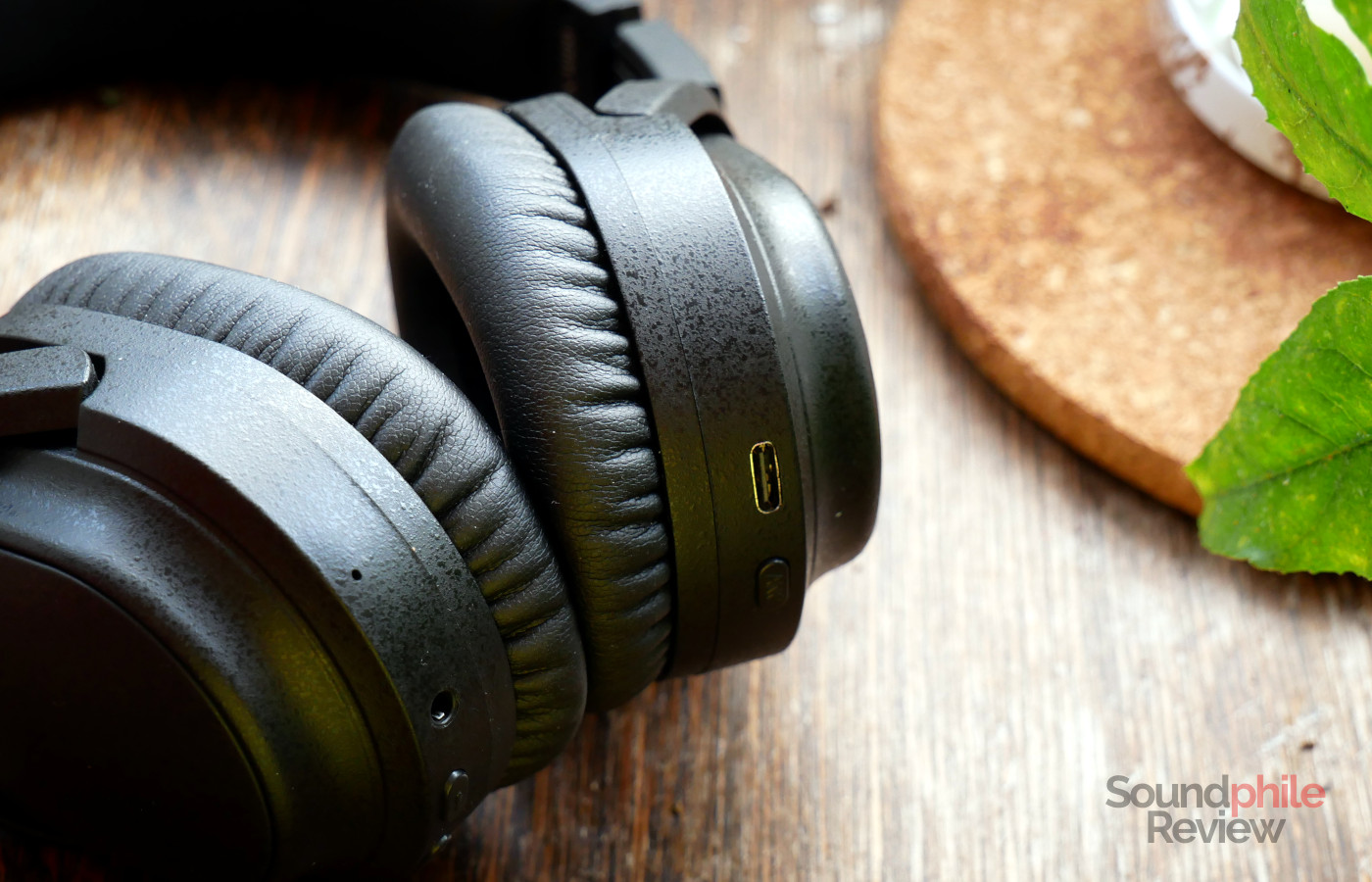
final states that the UX3000’s battery life amounts to 25 hours with ANC and 35 hours without it. I can attest that I have only had to charge the headphones once in the more-or-less two weeks in which I’ve been using them. One thing I appreciate is that the headphones are perfectly usable even when the battery has run out of juice by connecting them to the source via a 3.5 mm jack. Connecting the jack will also power the headphones off.
One weird thing about the UX3000 is that the ANC feature can be used even when they are powered off: the status LED (on the right hand side) lights up green when you use ANC this way. It does stay on even when you power off the headphones after you’re done using them and this means that you need to remember to disable ANC before your power off the headphones, otherwise the battery will keep on draining until it’s depleted. This is actually bad design, since one normally expects that powering off a device really powers it off and doesn’t leave some features that drain up battery enabled.
Sound & Specs
I’ve mostly tested the UX3000 with my desktop and laptop computers, playing FLAC files.
final UX3000 |
| Frequency response | 20 – 40,000 Hz |
| Impedance | N/A |
| Sensitivity | N/A |
| Bluetooth version | 4.2 |
| Codecs | SBC, AAC, aptX HD, LDAC |
final goes to great lengths to explain how they specially designed the drivers for the UX3000 because the ANC feature normally causes issues to drivers. They also write how they used equalisation to add some treble – this is an important detail, so remember that.
There is a constant high-pitched hiss when the headphones are on; it is subtle, but clearly audible. It actually increases in volume if you turn on noise cancelling and it becomes even higher pitched as well – it sounds a bit like white noise, but with a distinctive presence of high-frequency noise in it. This is not a major issue if you are going to use it in places where noise is significant, such as planes or public transport, but in quieter areas you are probably going to hear it clearly.
Soundstage is decently wide, with a bit of space to the sides, but lacks depth and therefore gives me the impression of being bidimensional. Imaging is limited and I often have the impression of hearing both left and right channels at the same time, but not the centre one; the result is that music is not super immersive. Instrument separation is limited as well and often I find music to be a bit muddy.
I find bass very good: it is north of neutrality, but this is done tactfully so it doesn’t overpower the rest. It’s still quite powerful though, so it is probably going to satisfy those who seek a bit more kick to their sound. It is decently deep, though the curve does start to go down quite soon and reaches 20 Hz without a lot of volume: in order to listen to the intro to Massive Attack’s Angel I had to raise the volume by a fair bit. Purely in terms of quality, though, the UX3000 are top notch: bass is tight, fast and well detailed, with very good physicality.
Midrange is very recessed, to the point it’s often barely there. Even in tracks where it really is front and centre, like Led Zeppelin’s Black Dog, it sounds distant and hollow. The emphasis here is on the upper section, so you can hear electric guitars and violins, as an example, better than male voices. This is a small difference, though, as all of them sound rather distant. The level of detail is commendable, but it’s hardly appreciable. It’s probably this recession of the mids, together with bass being more present, that contributes to the sound being muddy. I quite like the physicality and speed, as both are very good: drums sound rather convincing, with a good hit and rapid transients.
Treble is the biggest issue with the final UX3000. I find it very fatiguing due to it being overblown: there are multiple generous peaks that make it harsh and unpleasant, with cymbals that end up being piercing. As a couple of examples, I’s Warriors has cymbals coming almost in front of everything else, while Led Zeppelin’s Rock and Roll – where midrange really is the star of the show – has cymbals taking the centre of the scene instead of Jimmy Page’s guitar and Robert Plant’s voice. The good thing about treble is that it has a lot of detail, so if you don’t mind its excessive presence it’s actually quite great from that perspective. I specifically mentioned the use of equalisation before because it turns out that final made the situation much worse with their decision to use it: using the UX3000 with the cable leads to a much calmer and less peaky treble section, even with an amplifier such as the THX AAA 789 which is regarded by some as “cold” and “trebly”.
Final Thoughts
It’s finally time for the final thoughts about the final UX3000. Sorry, I had to do this. On a more serious note, I am not entirely satisfied with the UX3000. While they do many things right, with great design, fantastic passive isolation, good comfort and very good ANC, they nearly miss the mark in the most important thing of all: sound. The UX3000’s problem is just one and it’s treble, which is quite fatiguing. As a consequence, bass appears less prominent than it really is, while midrange is left behind.
Another issue is that the headphones don’t really turn off if you power them off with ANC enabled. You have to disable ANC and then you can actually power off the headphones, which is extremely inconvenient and a rather poor design choice.
In the UK and in Europe, the UX3000 cost just £119 and €139, which puts them in the affordable category; in the US, $179 is less inviting, as it is a premium of $20 over the exchange rate – and you still need to add taxes on top. Whatever the price is in your region, the peculiar tuning of these headphones makes them less appealing than competitors. Still, there’s a lot to love here and I think the UX3000 can actually be a good choice for many who are looking for a competent noise-cancelling headphone.

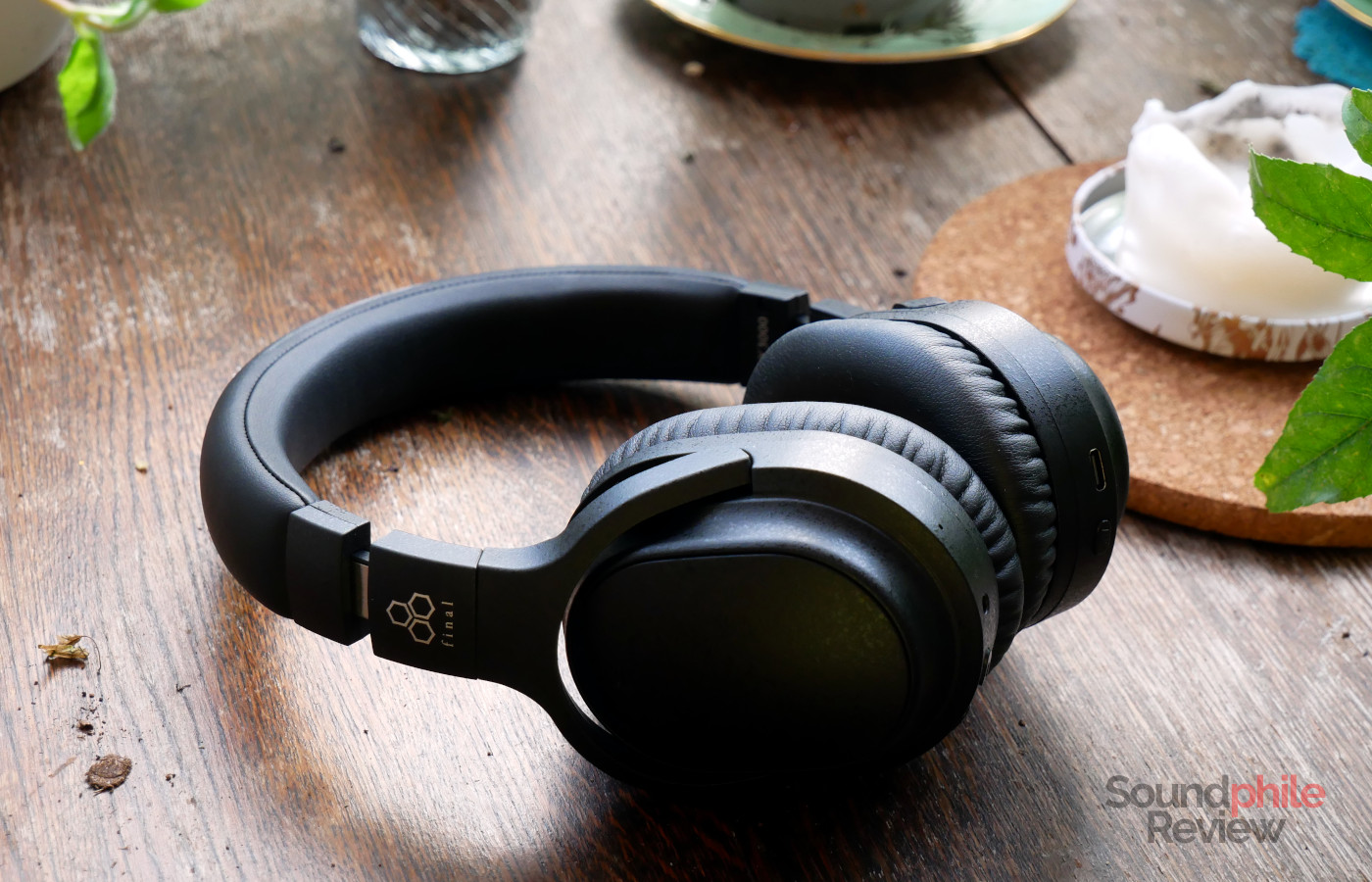
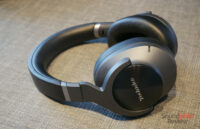
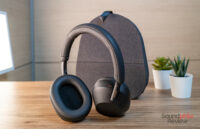
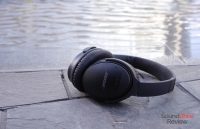
Jabra 85h will be butter?
No idea. I haven’t tried them, so they may be margarine. (I am so sorry, but I just couldn’t resist!). On a more serious note: I haven’t tried them, so I don’t know how they stack up against the UX3000.
For anyone coming to this review at a later point, I’ve owned these headphones for more than half a year and I can say the headphones are easily a 8/10 if not 9/10 especially for the price.
Some points:
-I got them for 140€ from Amazon including tax!
-There is no squeaking or creaking of the headphones even after extensive daily use of them.
-They get warm, but certainly not hot – especially in the winter, in the summer it’s a bit of a different story, but I work out with these and can handle it fine. They handle sweat alright too.
– to quote a part from the review “funny fact is that the accent sounds to me like a posh Italian person trying to speak English” – try Asian (probably Chinese) accent, doesn’t sound Italian at all, I am not even Italian but that’s straight up insulting.. anyway
-ANC deals fine with voices – 50% volume on my Android phone + ANC makes only very loud noises come through really but I’ve had people shout at me because I just ignored them (couldn’t hear them)
-The most important part – the sound:
There’s no hiss in the headphones when you turn them on (maybe faulty piece of the reviewer or bad connection or whatever), my UX3000 stay completely silent until you play something and in quiet parts there’s no hiss or white noise present.
Also they sound great, out of the box I would say they need a bit of burn in, but they already sound better or on par with the famous Sony WH-1000XM4 (sadly didn’t get a chance to compare to the XM5 yet) which are more expensive, and with a bit of EQ tuning you get an absolutely glamorous sound.. for that I can recommend looking up oratory EQ tuning for the Harman curve, it’s really great.
I had many headphones and earphones before but these are my daily (really daily) drivers now for everything. They are fun, light, battery life is great (I get over 30hrs easily with 70% volume usually and ANC on).
Oh and the function of having ANC on while the headphones are on? You just remember to turn it off if you don’t need it, but leaving just the ANC on is also helpful for some situations – and enables you to have ANC even with a 3.5mm jack connected to the headphones!
For those wondering why did I leave this comment now when I already own the headphones for a long time – I was looking for their IP rating and stumbled across this review and gave it a read but I really deeply disagree with the author.
I don’t understand what you find insulting in that comment. I am in fact Italian, Italian is my native language, I lived in Italy for 28 years, and I know what a posh Italian accent is like: it sounds like that. Where is the insult to anyone?
I won’t spend much time commenting on the rest as it’s the usual thing where people like a pair of headphones (which you definitely should by all means) and mistake that for the headphones having hi-fi sound. In my opinion, the point you are trying to make automatically becomes moot when you say you need EQ as that causes distortion, but to each their own. As for “you just remember to turn it off”… that was exactly the entire point I was trying to make in the review, that you often will forget about it (and on a design level you absolutely don’t need this to enable ANC with 3.5 mm jacks, by the way!).